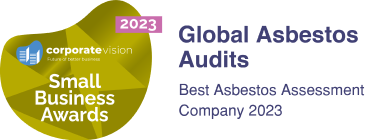Managing asbestos-containing materials (ACMs) in buildings is a critical issue that demands careful attention and precise planning. Developing and implementing an asbestos management plan is vital to this process. This article explores the responsibilities of various stakeholders in managing asbestos and the importance of an effective asbestos management plan.
The Role of Building Owners
Building owners bear primary responsibility for asbestos management. They are obligated to:
- Identify and assess the presence of ACMs
- Develop and maintain an asbestos management plan
- Ensure the asbestos management plan is implemented effectively
- Regularly review and update the asbestos management plan
The asbestos management plan should detail the location, condition, type and risk assessment of identified ACMs as detailed in the asbestos register and procedures for managing these materials safely.
Body Corporate and Rental Manager Responsibilities
In multi-unit dwellings or commercial properties, the body corporate or rental manager often assumes responsibility for asbestos management on behalf of the owners. Their duties typically include:
- Commissioning asbestos surveys
- Maintaining an up-to-date asbestos register
- Implementing the asbestos management plan
- Communicating asbestos-related information to occupants and contractors
These entities are crucial in ensuring that the asbestos management plan is adhered to and that all relevant parties are informed of potential asbestos risks.
Tenant Responsibilities
While tenants are not primarily responsible for asbestos management, they do have certain obligations:
- Comply with the asbestos management plan
- Report any damage to known or suspected ACMs
- Refrain from activities that may disturb ACMs without proper authorisation and precautionary measures.
Tenants should be provided with information about the presence of ACMs and the contents of the asbestos management plan relevant to their occupancy.
Developing an Effective Asbestos Management Plan
Once ACMs have been identified, an appropriate asbestos management plan must be formulated. This plan should include:
- A comprehensive asbestos register
- Risk assessment of identified ACMs
- Control measures for managing asbestos risks
- Procedures for dealing with asbestos incidents
- Training requirements for staff and contractors
- A timetable for reviewing the plan
The asbestos management plan should be tailored to the building’s specific circumstances and the nature of the ACMs present and should be readily available to tenants and contractors.
Asbestos Management in Demolition, Renovation, and Construction

Asbestos management becomes particularly critical during demolition, renovation, and construction activities. In these scenarios:
- A detailed asbestos register must be consulted before work commences
- The asbestos management plan should outline specific procedures for these activities
- Licensed asbestos removalists may need to be engaged
- Air monitoring may be required during and after asbestos removal
The asbestos management plan should provide clear guidelines for managing asbestos risks during these high-risk activities.
Legal Compliance and Health Implications

Adherence to an asbestos management plan is a matter of best practice and a legal requirement in states and territories in Australia. Failure to implement an effective asbestos management plan can result in:
- Regulatory fines and penalties
- Civil liability for asbestos-related health issues
- Reputational damage to individuals and organisations
More importantly, a well-executed asbestos management plan is crucial for protecting the health of building occupants, workers, and the general public from the severe health risks associated with asbestos exposure.
The responsibility for managing asbestos in a building is shared among owners, body corporates, rental managers, and tenants, with the primary onus falling on the property owner. Central to this responsibility is developing and implementing a comprehensive asbestos management plan. This plan is crucial in controlling asbestos risks, ensuring legal compliance, and safeguarding public health. By understanding their roles and diligently following the asbestos management plan, all stakeholders can contribute to creating safer environments and mitigating the dangers posed by asbestos-containing materials.
Global Asbestos Audits are experts in asbestos audits, asbestos testing, asbestos registers and asbestos management plans.
If you suspect asbestos in your building or have identified ACMs but have not yet formulated an asbestos management plan, contact GAA for more information.


